Palermo is Buenos Aires’ largest barrio and also one of its most walkable, with tree-lined streets dotted by casas chorizo, long, narrow single-story houses built in the late 19th century and now highly coveted for renovation.
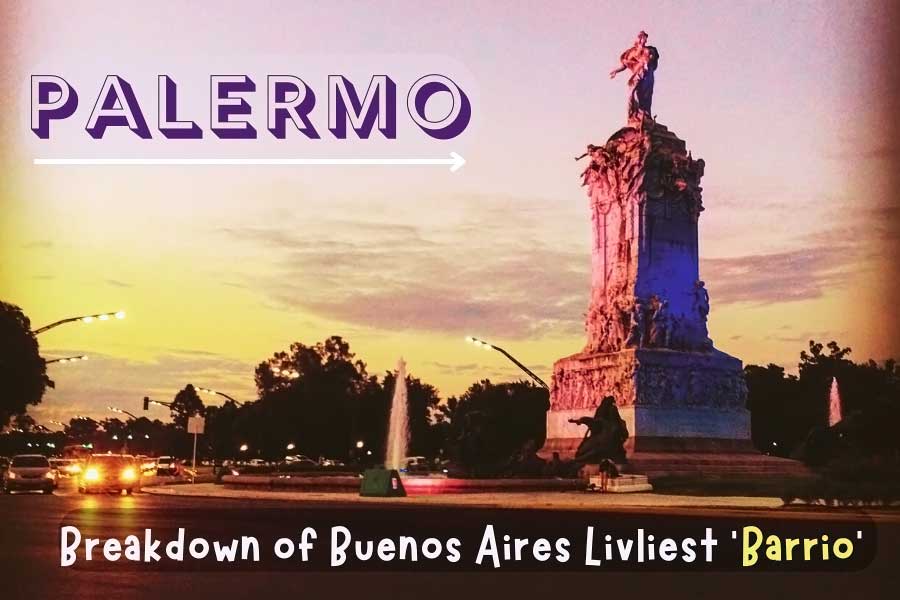
That’s because these days, Palermo is trendy, slick and expensive.
Over the last 15 years development here has exploded. Sushi restaurants seem to open and close every other week and construction scaffolding is a constant.
So coveted is Palermo that realtors promote surrounding neighborhoods for their proximity to Palermo—Villa Crespo is ‘Palermo Queens’ and Chacarita is ‘Palermo Village’ or ‘Chacalermo.’
Palermo is really a neighborhood of neighborhoods.
Each sub-neighborhood has its own nickname and a different feel: Palermo Chico, Palermo Soho, Palermo Hollywood, Alto Palermo and two bonus neighborhoods: Las Cañitas and Villa Freud.
Palermo Chico
At the northeastern edge of Palermo lies Palermo Chico, ‘small Palermo,’ and as the name implies, it’s rather exclusive.
Some of Buenos Aires rich and famous live here.
It’s easy to see why it’s so desirable: Palaces-turned-embassies face luxury 1960s-era apartment buildings and all have easy access to the city’s largest, greenest parks, Los Bosques de Palermo, or the ‘Palermo forest,’ the lungs of this area, fashioned after Paris’ Bois de Boulogne.
On weekends, porteños bicycle around the small lake, picnic on the Planetarium’s lawns and stroll the Japanese Gardens and the Rose Garden.
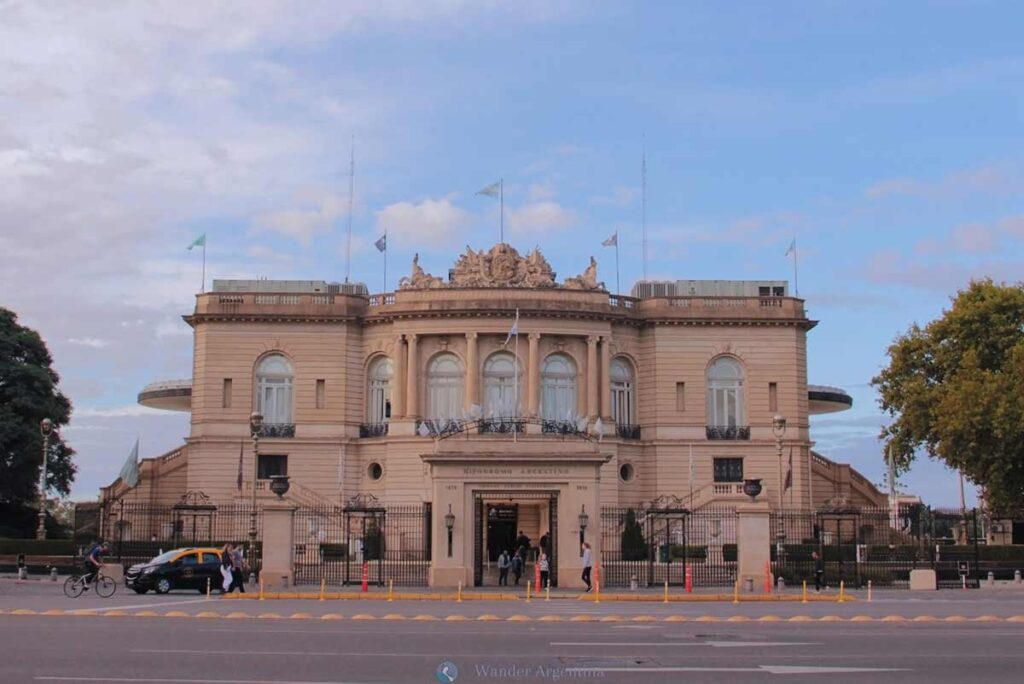
Facing the park are the polo fields and the spectacular Hippodromo, the city’s surprisingly clean and non-depressing racetracks.
If your feet are aching after wandering Palermo, making a couple of bets is an excellent way to spend a few hours outdoors while also getting a peek at Argentine horse culture.
Plaza Italia
If going to and from Palermo on a city bus, you’ll most likely pass through Plaza Italia, where main avenues Las Heras and Sarmiento merge into Av. Santa Fe.
Though Santa Fe is usually groaning with traffic, the lovely Botanical Garden, opened in 1898, offers a good escape from the bustle outside the gates.
Here the resident cats doze in the sun alongside stunning art nouveau greenhouses.
Though picnicking is not allowed, its several grassy lawns are often filled with people sharing mate, the traditional herbal infusion of the Río de la Plata.
It’s hard to believe now, but the Jardín Botanico used to be jokingly referred to as ‘Gatonico’ (Gato=cat) because there were hundreds of well-fed cats in the park.
Neighbors mobilized to get them adopted, but cats are still a common site.
Scores of dedicated cat lovers, many little old ladies from the neighborhood, visit the gardens every day, rain or shine, to feed ‘their cats.’ If the proliferation of stray porteño felines isn’t exotic enough, adjacent to the Botanical is the Buenos Aires Zoo.
Palermo Viejo
Many of Buenos Aires’ most inventive restaurants are located In Palermo Viejo, which in the last few years many have begun to refer to as two distinct areas — Palermo Soho and Palermo Hollywood (much to the dismay of long-time residents).
Though the majority of artists have long since decamped to cheaper environs like La Boca or Boedo, playful murals and stenciled graffiti still abound, lending these two mini-neighborhoods some whimsical appeal.
A random stroll might lead you to a corner painted with orange and yellow aliens, interlocking triangles and blue angels, right next door to a fancy restaurant.
Palermo Soho
The heart of fashionable Palermo is this stretch between El Salvador and Niceto Vega known as Palermo Soho.
The streets surrounding Plaza Palermo Viejo are lined almost entirely with cool cafes and white-walled designer boutiques.
Many of the casas chorizo around here are inventively painted in pretty pastels that lend a rather picturesque appeal to the neighborhood on a sunny afternoon.
Walking up Serrano to the east, you’ll find a small plaza labeled Plazoleta Cortázar on your map and known by locals as Plaza Serrano.
This tiny, circular plaza is ringed with brightly painted cafes whose tables spill out onto the sidewalk.
Almost every night of the week, Plaza Serrano overflows with revelers.
It’s great for people-watching, but hold onto your bag if you’re sitting outside since this lively scene provides good cover for thieves.
On weekends, both Plaza Palermo Viejo and Plaza Serrano are the sites of popular street fairs.
While the street fair in San Telmo as well as the one in Recoleta are good places for those seeking traditional souvenirs like ponchos and mates, the Palermo stalls are ground zero for funky jewelry and multi-colored leather purses.
Belts and asymmetrical T-shirts also abound. Go early to avoid the crowds.
Palermo Hollywood
On the other side of Av. Juan B. Justo lies Palermo Hollywood, so called due to the concentration of TV and film production studios.
This sub-neighborhood is home to a growing number of fancy restaurants and clubs, but unlike Palermo Soho, there are no boutiques here — yet.
Despite the presence of the TV and film studios, by day it’s not very glamorous.
In this sector of Palermo hints of the past still survive; you’ll stumble across the occasional concrete-floored parrilla (traditional steakhouse) and old-school social clubs like Club EROS, where kids play in football leagues and men eat raviolis together while watching soccer matches on the tube.
Foot traffic around Palermo Hollywood increases near lunch and dinner times, but the action is really only concentrated on a few streets, with lots more space between businesses than in Palermo Soho.
After midnight, especially on weekends, Palermo Hollywood becomes more lively as taxis crowd the streets and competing bass lines pulse well into the morning.
On Gorriti and Honduras between Juan B. Justo and Dorrego, there is a string of glittering restaurants, clubs and bars. Nearer to the railroad tracks (which can feel a bit seedy) are the bigger dance clubs such as Cro Bar and Niceto.
Alto Palermo
Alto Palermo is a bustling area known for its modern vibe, shopping opportunities, and lively atmosphere.
It offers a blend of residential comfort and commercial activity.
Near the Bulnes stop on the subway is the upscale Alto Palermo shopping mall, where Argentina’s flagship Starbucks is always packed with teenagers.
Heading down Av. Santa Fe towards downtown, you’ll find lots of moderately priced shoe and clothing stores.
Behind Alto Palermo is Parque Las Heras, a 12-hectare framed by General Las Heras Avenue, Colonel Díaz Avenue, Jerónimo Salguero Street, and Juncal Street that is popular with sunbathers and mate drinkers.
It also has a soccer field, carousal and ping pong tables.
A couple blocks to the east is the Evita Museum, which offers an interesting glimpse into the cult of Evita Perón, as well as a lovely garden restaurant.
Villa Freud
Buenos Aires is famous for having the highest number of psychoanalysts per capita of anywhere in the world and many of those shrinks have their practices in this area, hence the nickname Villa Freud.
Villa Freud is a mini-neighborhood between Alto Palermo and Barrio Norte, beginning around Plaza Guadalupe, officially known as Plaza Güemes.
The nearby Church of Our Lady of Guadalupe was completely renovated a few years ago and is worth a visit for its architecture and will appeal to the Virgin of Guadalupe fans.
From the plaza, you can take a stroll down the pedestrian portion of leafy Charcas Street, which residents traditionally — and somewhat grandiosely— refer to as ‘the Boulevard.’
Pop into a café for a coffee and you’ll probably hear a local ruminating about their psychoanalysis session!
Las Cañitas
Las Cañitas, is often a sub-neighborhood within the larger Palermo district.
Sandwiched around the Military Equestrian Field, the area sits between Luis Maria Campos Avenue, Ortega and Gassets Street, Dorrego and Libertador Avenues.
It’s a charming, upscale area of the city, with outdoor dining and vibrant nightlife.
This once-quiet residential quarter has transformed into one of the city’s most sought-after spots.
Though it’s technically a part of northern Palermo, many locals erroneously consider Las Cañitas to be part of the Belgrano neighborhood, its neighbor to the north.
Perhaps because it’s a hike from the subway, tucked away behind the polo fields and bordered by Los Bosques de Palermo, there is the sense that Las Cañitas is a self-sufficient little colony.
Though it’s not far from Palermo shopping and hotspots, it’s easy to get the impression that residents of Las Cañitas never leave their pleasant little enclave.
They have their own miniature version of Alto Palermo, the upscale El Solar, packed with bars, pubs, and clubs that attract a lively, well-dressed crowd
Baez Street is bustling at night, with long waits for tables at the popular restaurants where you can dine on the sidewalk in relative peace and a substantial bar scene.
-by Elena Morin
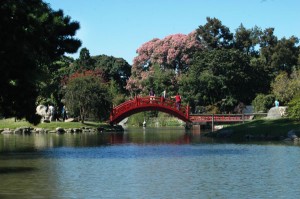
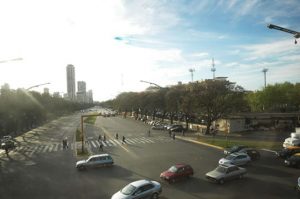
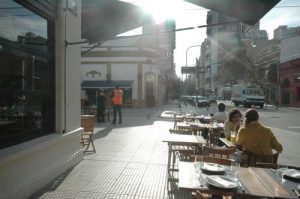
6 thoughts on “Palermo: A Breakdown of Buenos Aires’ Largest Neighborhood”
Comments are closed.